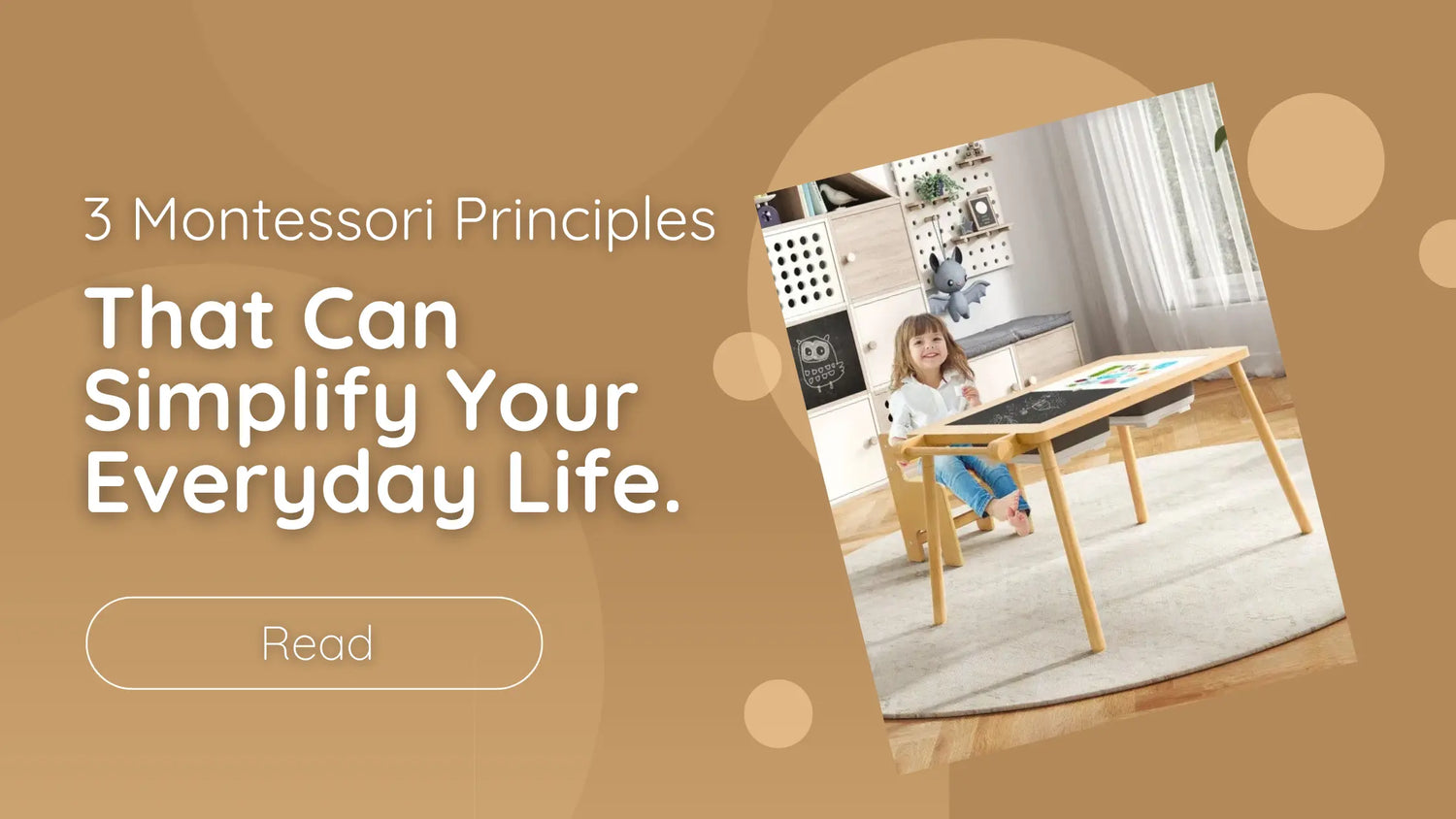When most people hear the word Montessori, they think of beautifully designed classrooms or specialized schools. But the heart of Montessori is much more than an educational method — it's a way of living, thinking, and connecting with our children and ourselves.
You don’t need a fully equipped classroom or a certification to embrace the Montessori philosophy at home. In fact, just a few simple principles can bring more peace, clarity, and connection into your everyday routines.
Here are three Montessori principles you can start using today — even outside the classroom:
1. Respect the Child’s Rhythm
In our fast-paced world, we often rush children from one task to the next: “Hurry up, we’re late!”, “Don’t take so long!”, “Let me do it for you.”
But one of the foundational ideas in Montessori is to slow down and respect the child’s natural pace.
Children thrive when they’re allowed time to explore, concentrate, and complete tasks without being interrupted. This builds not only their confidence but also their ability to stay focused — something we all want for them.
Try this:
Next time your child is deeply involved in play or a task, pause before jumping in. Let them finish. Watch them. You’ll see just how capable and resourceful they are when given the time.
2. The Environment Shapes the Mind
Maria Montessori believed that the environment is the child’s second teacher. A prepared, orderly space supports learning, independence, and emotional well-being.
This doesn’t mean a minimalist home or a Pinterest-perfect playroom — it means intentionally designing spaces that allow your child to access what they need, put things away independently, and feel a sense of belonging.
Try this:
Pick one corner of your home — maybe the kitchen, their bedroom, or your entryway. Add a low shelf, a small basket for shoes, or a step stool so your child can help wash their hands or prepare a snack. You’ll be amazed at how a simple change can empower your child.
3. Independence Builds Confidence
Montessori encourages us to say: “Help me do it myself.”
Instead of doing everything for our children, we invite them to participate in real-life tasks — pouring water, folding laundry, setting the table, or cleaning up.
These small moments give children a sense of purpose. They feel needed, valued, and proud of their contribution.
Try this:
The next time you’re doing a simple task, invite your child to do part of it. Yes, it might be slower or messier at first — but it’s building life skills that will serve them for years to come.
Montessori is not about being perfect or rigid — it’s about being intentional.
It’s about trusting in the child’s natural development and creating a home that nurtures independence, respect, and curiosity.
You don’t need special materials or a fancy setup. Start small. Stay consistent. And most of all — observe and enjoy the unfolding of your child’s growth.
🌿 At Seaside Montessori, we’re passionate about supporting families on this journey. Whether it’s through our thoughtfully curated toys, free resources, or Montessori lesson planner — we’re here to help you bring calm, clarity, and connection into your daily life.
Did one of these principles speak to you?
We’d love to hear how you’re applying Montessori at home — share your experience in the comments or tag us on Instagram @seaside_montessori_official








Leave a comment
All comments are moderated before being published.
This site is protected by hCaptcha and the hCaptcha Privacy Policy and Terms of Service apply.